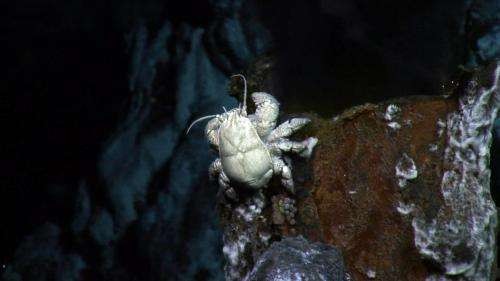Scientists have discovered the first "Yeti Crab" of the Antarctica continent, which they have named "The Hoff" after the hairy-chested American actor David Hasselhoff. The new animal species with fur-like pincers lives in the deep-sea environment of the Antarctic's Southern Ocean. This creature grows and harvests its own bacteria food, and then eats the microbes.
Scientists have discovered a grand total of three species of yeti crabs, according to Live Science. Only one type resides in the Southern Ocean.
The new animal discovery has given scientists a better insight into how marine animals survive in cruel deep-sea environments. Such harsh conditions include cold waters, little oxygen, and no sunlight.
A University of Southhampton (UK) research team, led by Sven Thatje, discovered the yeti crab during 2010. They captured images by using a Remotely-Operated Submersible Vehicle (ROV).
After conducting research for years, the scientists gave the Antarctic crab the scientific name Kiwa tyleri. It honored Paul Tyler, a British deep-sea biologist from Southhampton University, according to HNGN.
Since the discovery of the hairy crab, scientists have conducted in-depth studies of the animal. Their methods included computed tomography (CT) scans and genetic sequencing.
Interestingly, the UK scientists discovered that the new crab species survived by growing its own nourishment. It then used a comb-like mouth to harvest and consume the microorganisms.
Thatje told BBC News that the crab's belly was covered in setae. The deep-ocean animal used the bristle-like structures to collect and store a huge amount of bacteria.
The yeti crabs survive the ocean's below-freezing temperatures by staying in warm-water environments called "hydrothermal vents" their entire lives. However, the females sometimes wander out to release eggs.
Thatje stated in a press release that the Antarctica continent's deep-sea cold waters trap The Hoff in the hydrothermal vent area. Its habitat has a limited size of a few cubic meters (17 sq. ft.) in volume. However, the deep-sea creature has adapted. It survives the tough surroundings by living in high-density areas and nibbling on self-grown bacteria.
The scientific findings about the Antarctic's yeti crab species were published in the June 24 issue of the journal PLUS One.



























